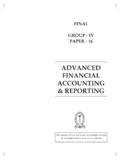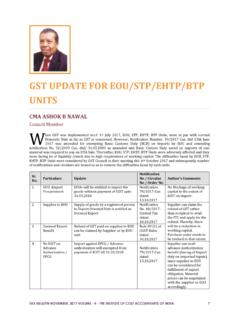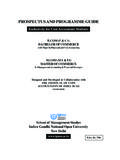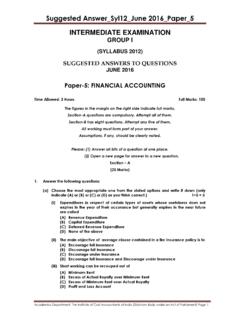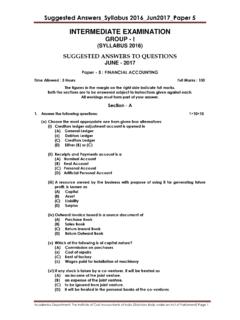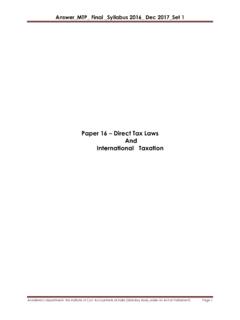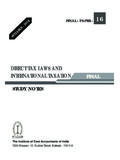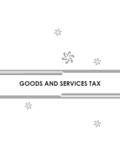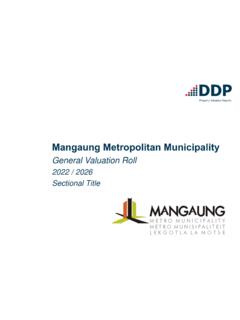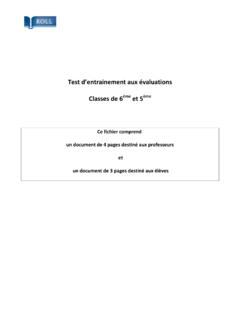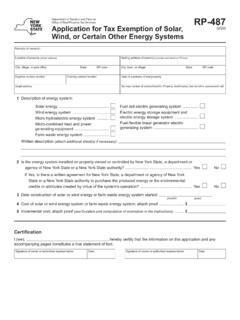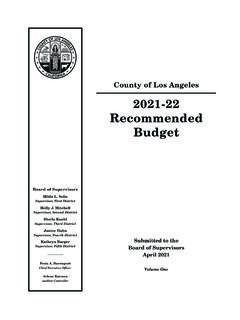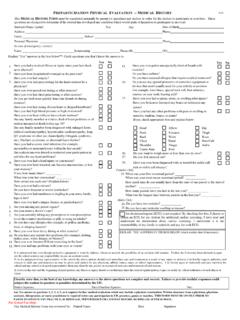Transcription of ADVANCED FINANCIAL MANAGEMENT - icmai.in
1 FINAL : PAPER - 14. ADVANCED FINANCIAL . MANAGEMENT . (AFM) FINAL. STUDY NOTES. The Institute of Cost Accountants of India CMA Bhawan, 12, Sudder Street, Kolkata - 700 016. First Edition : May 2013. Second Edition (Revised & Updated) : August 2014. Published by : Directorate of Studies The Institute of Cost Accountants of India (ICAI). CMA Bhawan, 12, Sudder Street, Kolkata - 700 016. Printed at : Das Printers 61, Surya Sen Street, Kolkata - 700 009. Copyright of these Study Notes is reserved by the Insitute of Cost Accountants of India and prior permission from the Institute is necessary for reproduction of the whole or any part thereof. Syllabus Syllabus Structure A FINANCIAL Markets and Institutions 30%. B FINANCIAL Risk MANAGEMENT 25%. C Security Analysis and Portfolio MANAGEMENT 20%. D Investment Decisions 25%. D. 25% A. 30%. C. 20% B. 25%. ASSESSMENT STRATEGY. There will be written examination paper of three hours. OBJECTIVES.
2 To provide expert knowledge on setting FINANCIAL objectives and goals, managing FINANCIAL resources, FINANCIAL risk MANAGEMENT , thorough understanding of investment portfolios and FINANCIAL instruments. Learning Aims The syllabus aims to test the student's ability to : E. valuate the role of agents and instruments in FINANCIAL markets Interpret the relevance of FINANCIAL institutions A. nalyze the degree of risk for its effective MANAGEMENT Advise on investment opportunities Skill set required Level C: Requiring skill levels of knowledge, comprehension, application, analysis, synthesis and evaluation. Section A : FINANCIAL Markets and Institutions 30%. 1. Agents in FINANCIAL Markets 2. FINANCIAL Market Instruments 3. Commodity Exchange 4. Infrastructure Financing Section B : FINANCIAL Risk MANAGEMENT 25%. 5. Capital Market Instruments 6. Types of FINANCIAL Risks 7. FINANCIAL Derivatives as a tool for Risk MANAGEMENT 8. FINANCIAL Risk MANAGEMENT in International Operations Section C : Security Analysis and Portfolio MANAGEMENT 20%.
3 9. Security Analysis & Portfolio MANAGEMENT Section D : Investment Decisions 25%. 10. (a)Investment Decisions under uncertainty (b) Investments in ADVANCED technological environment (c) International Investments SECTION A: FINANCIAL MARKETS AND INSTITUTIONS [30 MARKS]. 1. Agents in FINANCIAL Markets (a) Reserve Bank of India; SEBI; Banking Institutions (b) Non-Bank FINANCIAL Corporation's (NBFCs). (c) Insurance, Pension Plans and Mutual Funds 2. FINANCIAL Market Instruments (a) Call money, Treasury Bills, Commercial Bills, Commercial Paper; Certificate of Deposits, Government Securities and Bonds, Repo, Reverse Repo and Promissory Notes (b) Futures, Options, other Derivatives (c) Money Market Instruments & Mutual Funds 3. Commodity Exchange (a) Regulatory Structure, Design of markets (b) Issues in Agricultural, Non-Agricultural Markets, product design, contract specifications, spot price and present practices of commodities exchanges (c) Intermediaries, Clearing house operations, risk MANAGEMENT procedures and delivery related issues (d) Issues related to monitoring and surveillance by exchanges and regulator, Basic risk and its importance in pricing (e) Commodity options on futures and its mechanism 4.
4 Infrastructure Financing (a) FINANCIAL objectives, policies on financing, investments and dividends. FINANCIAL forecasting, planning and uncertainties, interest rates, inflation, capital gains and losses exchange control regulation, government credit policies and incentives statistics on production, price indices, labour, capital market based on published statistical data (b) Internal source, retained earnings, provisions etc, Issues in raising finance, legal form of organisation, provisions of the companies Act, control of capital issues. Short term sources : Trade credit, factoring, Bill of exchange, Bank Loan, Cash credit, overdraft, public deposit, SEBI regulations, primary and secondary markets (c) Securitization, Viability, GAP Funding SECTION B: FINANCIAL RISK MANAGEMENT [25 MARKS]. 5. Capital market instruments (a) Primary and secondary markets and its instruments (b) Optionally convertible debentures, Deep discount bonds (c) Rolling settlement, Clearing house operations (d) Dematerialization, Re-materialization (e) Depository system (f) Initial Public Offering (IPO)/ Follow on Public Offer (FPO); Book Building (g) Auction, Insider trading (h) Credit rating- objective, sources, process, credit rating agencies in India 6.
5 Types of FINANCIAL Risks (a) Asset based risk , Credit Risk, Liquidity Risk, Operational Risk (b) Foreign investment risk, Market Risk 7. FINANCIAL Derivatives as a tool for Risk MANAGEMENT (a) Forward & Futures meaning, risks associated, difference, features, stock futures, benefits of future market, components of future price, index and index futures, margin, hedging, hedging risks and portfolio returns using index futures, hedge ratio, cross hedge, perfect and imperfect hedge, stock lending scheme, forward rate interest, computation of appropriate interest rate (b) Options meaning, types, call and put options, terms and timing of exercise in options contract, determination of premium, intrinsic value and time value, strategy spread, bull spread, bear spread, butterfly spread, box spread, combination, straddle, strangle, strips and straps, put-call parity, binomial tree approach, risk neutral valuation , Black-Scholes and Merton, evaluation of option pricing delta, gamma, vega/lambda, theta, rho.
6 (c) Swaps and Swaption meaning, types, features, benefits, role of FINANCIAL intermediaries, interest rate swaps, valuation of different swaps (d) Interest rate derivatives meaning, interest rate caps, interest rate collars, forward rate agreements, interest rate futures 8. FINANCIAL Risk MANAGEMENT in International Operations (a) Forex market, equilibrium exchange rate, exchange rate arrangements, bid-ask rate and bid- ask rate spread, cross rate, currency arbitrage: two-point and three-point, parity conditions in International Finance: Purchasing Power Parity Unbiased Forward Rate Theorem Interest Rate Parity Fisher Effect International Fisher Effect, arbitrage operations, covered interest arbitrage (b) Exchange rate risk MANAGEMENT forex hedging tools, exposure netting, currency forward, cross currency roll over, currency futures, options, money market hedge, asset-liability MANAGEMENT (c) Foreign Investment Analysis: International Portfolio Investment International Capital Budgeting.
7 (d) Sources of Foreign currency, debt route, depository receipts, American Depository Receipts (ADRs) sponsored, unsponsored, Global Depository Receipts (GDRs), Warrants, Foreign Currency Convertible Bonds (FCCBs), Euro Issues, Euro Commercial Paper, Euro Convertible Bonds, Note Issuance Facility, Participating Notes (e) Foreign Investment in India, Joint Ventures, Foreign Technology (f) Taxation Issues in cross-border financing and investments, (g) International Transfer Pricing Objectives Arm's length pricing techniques, advance pricing agreements, Maximization of MNC's income through Transfer Pricing strategy SECTION C: SECURITY ANALYSIS & PORTFOLIO MANAGEMENT [20 MARKS]. 9. Security Analysis & Portfolio MANAGEMENT (a) Security analysis, Fundamental analysis, Economic analysis, Industry analysis, Company analysis, Technical analysis, Momentum analysis arguments and criticisms (b) Market indicators, Support and resistance level, Patterns in stock price (c) Statistic models, Bollinger bands (d) Portfolio MANAGEMENT meaning, objectives and basic principles, discretionary and non- discretionary portfolio managers (e) Theories on stock market movements Daw Jones Theory, Markowitz Model (f) Risk analysis types, systematic and unsystematic risk, standard deviation and variance, security beta, market model, alpha (g)
8 Portfolio analysis CAPM and assumption, Security and Capital market line, decision-making based on valuation , risk return ratio, arbitrage pricing model, portfolio return, portfolio risk co-efficient of variance, co-variance, correlation coefficient, correlation and diversification, minimum risk portfolio, hedging risks using risk free investments, project beta, levered and unlevered firms and proxy beta SECTION D: INVESTMENT DECISIONS [25 MARKS]. 10. (a) Investment decisions under uncertainty (i) Estimation of project cash flow (ii) Relevant cost analysis (iii) Project reports features and contents (iv) Project appraisal steps general, inflationary and deflationary conditions (v) Techniques of project evaluation (vi) Investment decisions under uncertainties (vii) Difference in project life EAC and LCM approaches, Capital Rationing, NPV vs. PI, NPV vs. IRR. (viii) Social Cost Benefit Analysis, Break-even Analysis (ix) Inflation and FINANCIAL MANAGEMENT (x) Sensitivity Analysis, Certainty Equivalent Approach, Decision Tree Analysis, Standard Deviation in Capital Budgeting (xi) Hiller's Model, Hertz's Model (xii) Discount Rate Component, Risk Adjusted Discount Rate (xiii) Option in Capital Budgeting (b) Investment in ADVANCED technological environment (i) FINANCIAL forecasting (ii) Strategic MANAGEMENT and Strategy levels (iii) Interface of FINANCIAL strategy with corporate strategic MANAGEMENT (iv) Completed FINANCIAL plan, Corporate taxation and financing, Promoter's contribution (v) Cost of capital cost of different sources of capital, weighted average cost of capital, marginal cost of capital, capital asset pricing model (vi)
9 Debt financing margin money, refinancing, bridge finance, syndication of loan and consortium, seed capital assistance, venture capital financing, deferred payment guarantee (vii) Lease financing finance and operating lease, lease rentals, sale and lease back, cross- border leasing (viii) Debt securitization - features, advantages, factoring, forfeiting, bill discounting (c) International Investments (i) World FINANCIAL markets (ii) Foreign portfolio investments (iii) Modern portfolio theory (iv) Issues posed by portfolio investment (v) Foreign portfolio trends in India emerging trends and policy developments Content SECTION A FINANCIAL MARKETS AND INSTITUTIONS. Study Note 1 : Agents in FINANCIAL Markets FINANCIAL System Reserve Bank of India (RBI) Banking Institutions Securities and Exchange Board of India (SEBI) Non-Banking FINANCIAL Company (NBFC) Insurance Pension Plans Mutual Funds Study Note 2 : FINANCIAL Market Instruments FINANCIAL Market Money Market Money Market Instruments Government Securities and Bonds Repo and Reverse Repo Promissory Note Futures, Options and Other Derivatives Mutual funds Study Note 3.
10 Commodity Exchange Commodity Exchange Commodities Exchanges in India Commodity Exchange Structure Indian Commodity Market - Regulatory Framework Indian Economy and Role of Agricultural Commodity Unresolved Issues and Future Prospects Contract Specifications (For Tutorial Reference only) Instruments Available for Trading Participants of Commodity Market Intermediaries of Commodity Markets Product Specification How the Commodity Market Works Clearing House Operations Risk MANAGEMENT Basis and Basis Risk Market Monitoring and Surveillance Commonly Futures and its Mechanism Commonly Used Terms in Commodity Market Study Note 4 : Infrastructure Financing Introduction Evolution of Financing Needs in Indian Infrastructure Infrastructure Financing methods- Present Scenario Project Financing versus Capital Financing Risk MANAGEMENT in Infrastructure Projects Financing Infrastructure Development: Recent Trends and Institutional Initiatives SEBI regulations relating to Infrastructure Sector Legal form of Organisation Sources of infrastructure investment in India FINANCIAL Objective Projected Investment in the Infrastructure Sector during the Twelfth Plan Investment and Dividend Decision The Interest Rates have been recently revised by the Board Issues in Infrastructure Financing Need for an Efficient and Vibrant Corporate Bond Market Measures taken by the Central Government Price Indices Internal Sources of Finanace Short Term Sources Issues and Challenges constraining Infrastructure Funding Primary & Secondary Market Structure SECTION B: FINANCIAL RISK MANAGEMENT .
